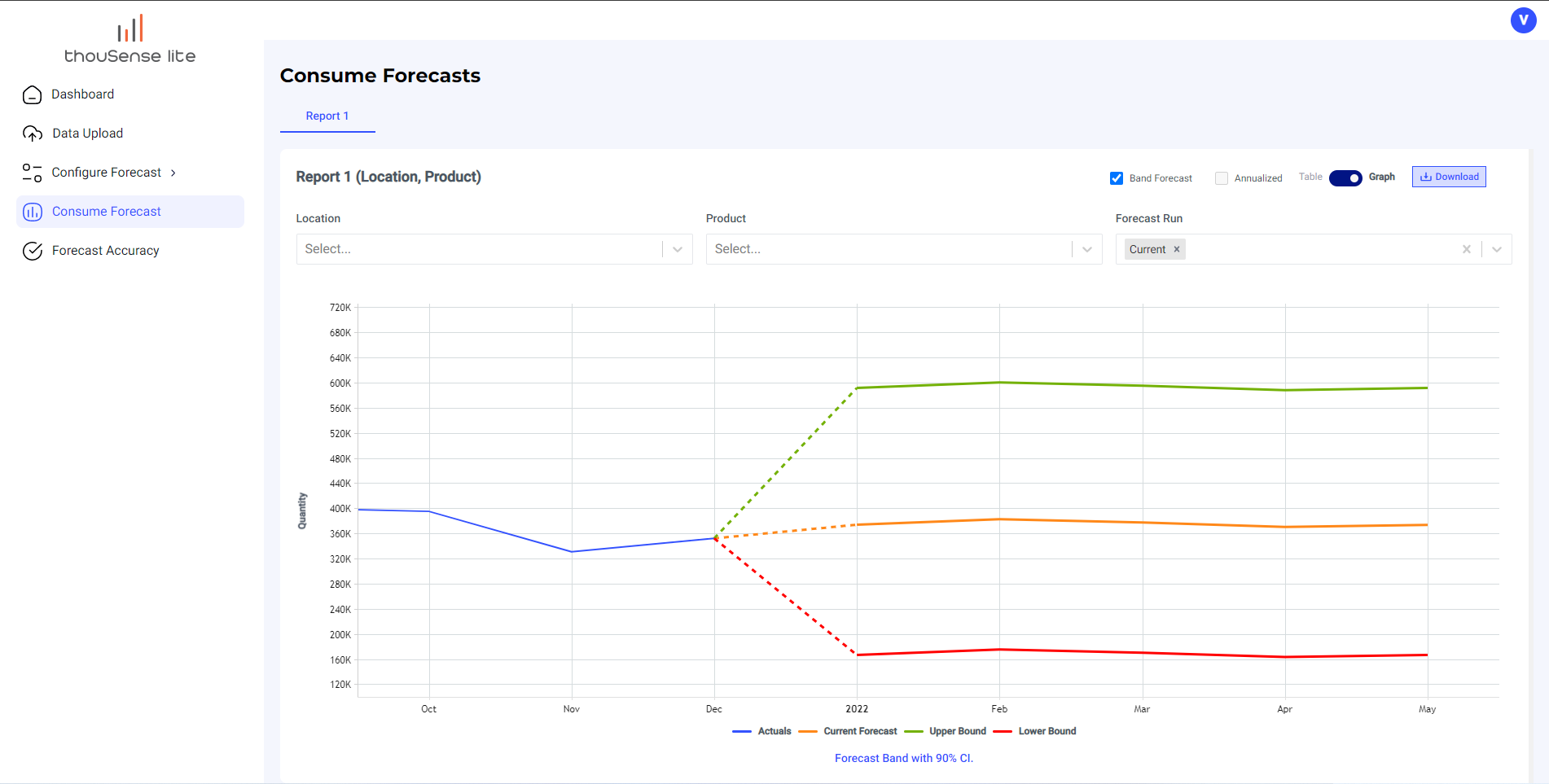Enhancing Demand Planning with Confidence Interval Based Forecasts Through thouSense

In the world of demand planning, accuracy and foresight are the twin pillars on which successful strategies are built. The ability to anticipate market demands accurately enables businesses to align their production schedules and inventory levels optimally. However, the traditional deterministic forecasting models often fall short in capturing the inherent uncertainties of market dynamics. This is where probabilistic forecasting, facilitated through confidence interval based forecasts, comes into play. A tool that epitomizes this approach is thouSense, providing demand planners with a robust mechanism to better their demand forecasting through a configurable confidence interval feature.
Understanding Probabilistic Forecasting
Unlike deterministic forecasts that provide a single-point estimate, probabilistic forecasting embraces the inherent uncertainties in demand patterns by offering a range of possible outcomes, each associated with a probability. This approach is often visualized through a probabilistic band forecast, which depicts a range of demand values within which the actual demand is likely to fall, with a certain level of confidence.
The Power of Confidence Interval Based Forecasts
A confidence interval gives an estimated range of values which is likely to include an unknown population parameter, the estimated range being calculated from a given set of sample data. In demand forecasting, a confidence interval based forecast provides a range within which the actual demand is likely to fall, with a certain degree of confidence. This is a game-changer for demand planners as it offers the following benefits:
Better Risk Management: By understanding the range within which demand can vary, businesses can better prepare for fluctuations, thereby managing risks more effectively.
Improved Decision-Making: When decision-makers have a clearer picture of the uncertainty associated with demand forecasts, they can make more informed decisions regarding inventory levels, staffing, and other resource allocations.
Enhanced Communication: A confidence interval can also serve as a communication tool between demand planners and stakeholders, providing a more realistic picture of what to expect.
Optimized Inventory Levels: By understanding the probable variance in demand, businesses can maintain optimal inventory levels, avoiding overstocking or understocking issues.
thouSense: Your Companion for Confidence Interval Based Demand Forecasting
thouSense is a state-of-the-art tool that incorporates the power of confidence interval based forecasting in its functionality. One of the standout features of thouSense is its capability to display a probabilistic band forecast at a configurable confidence interval. This feature allows demand planners to:
Customize Confidence Levels: Users can configure the confidence interval to match their risk tolerance and business objectives. Whether it's a tight 90% confidence interval for a risk-averse strategy or a wider 70% confidence interval for a more aggressive approach, thouSense accommodates varying business needs.
Visualize Uncertainty: The probabilistic band forecast visually represents the range of possible demand values, helping planners to intuitively understand and communicate the uncertainty associated with the forecasts.
Integrate with Existing Systems: thouSense is designed to seamlessly integrate with existing demand planning systems, enhancing their forecasting capabilities with its probabilistic approach.
Empower Decision-Makers: By providing a more realistic view of demand uncertainty, thouSense empowers decision-makers to make better-informed decisions, driving business success.
A Step Towards Future-Ready Demand Planning
Incorporating confidence interval based forecasting through tools like thouSense is a stepping stone towards a more resilient and future-ready demand planning process. As market dynamics continue to evolve, having a tool that allows for a more nuanced understanding of demand uncertainty is indispensable.
The ability to configure and visualize probabilistic forecasts at different confidence intervals is not merely a technical enhancement; it's a strategic asset. It's about transitioning from a static to a dynamic, probabilistic approach to demand planning, which is better suited to navigate the complexities and uncertainties of today's market landscape.
How to Maximize the Benefits of Probabilistic Forecasting in thouSense
Leveraging the power of probabilistic forecasting through thouSense can significantly enhance the demand planning process. However, to unlock its full potential, it's crucial to utilize the tool effectively. Here are some tips on how to maximize the benefits of probabilistic forecasting in thouSense:
Understand Your Confidence Levels:
It’s crucial to understand the implications of different confidence levels. A higher confidence level (e.g., 95%) will give you a wider range, which can be more conservative but safer. On the other hand, a lower confidence level (e.g., 80%) provides a narrower range, which could be riskier but more precise. Understanding this trade-off is crucial for setting the right confidence level for your business needs.
Educate Stakeholders:
Ensure that stakeholders are educated on the principles of probabilistic forecasting and the significance of confidence intervals. This will help in aligning expectations and facilitating better decision-making.
Utilize Historical Data:
Make sure to utilize historical data effectively. thouSense can analyze past demand patterns to provide more accurate probabilistic forecasts. Ensure your historical data is clean, accurate, and well-structured to get the most out of the tool.
Continuously Monitor Performance:
Continuously monitor the performance of your forecasts and adjust your confidence levels and other settings in thouSense accordingly. This will help in refining your forecasts over time.
Leverage the Visualizations:
Make full use of the visualizations provided by thouSense to understand and communicate the uncertainties associated with demand forecasts. Visualizations can help in making the abstract concept of probabilistic forecasting more tangible and actionable.
In conclusion, the probabilistic band forecast feature in thouSense is a significant advancement in the realm of demand planning.
By embracing the uncertainty and providing a means to quantify and visualize it, thouSense is paving the way for a new era of demand planning, where foresight is coupled with a realistic understanding of market uncertainties. The configurable confidence interval feature is a testament to the flexibility and power that thouSense brings to the table, making it an indispensable tool for modern demand planners striving to align their strategies with the ever-evolving market dynamics.
With thouSense, the future of demand planning is not just predictable; it's probabilistically precise.
